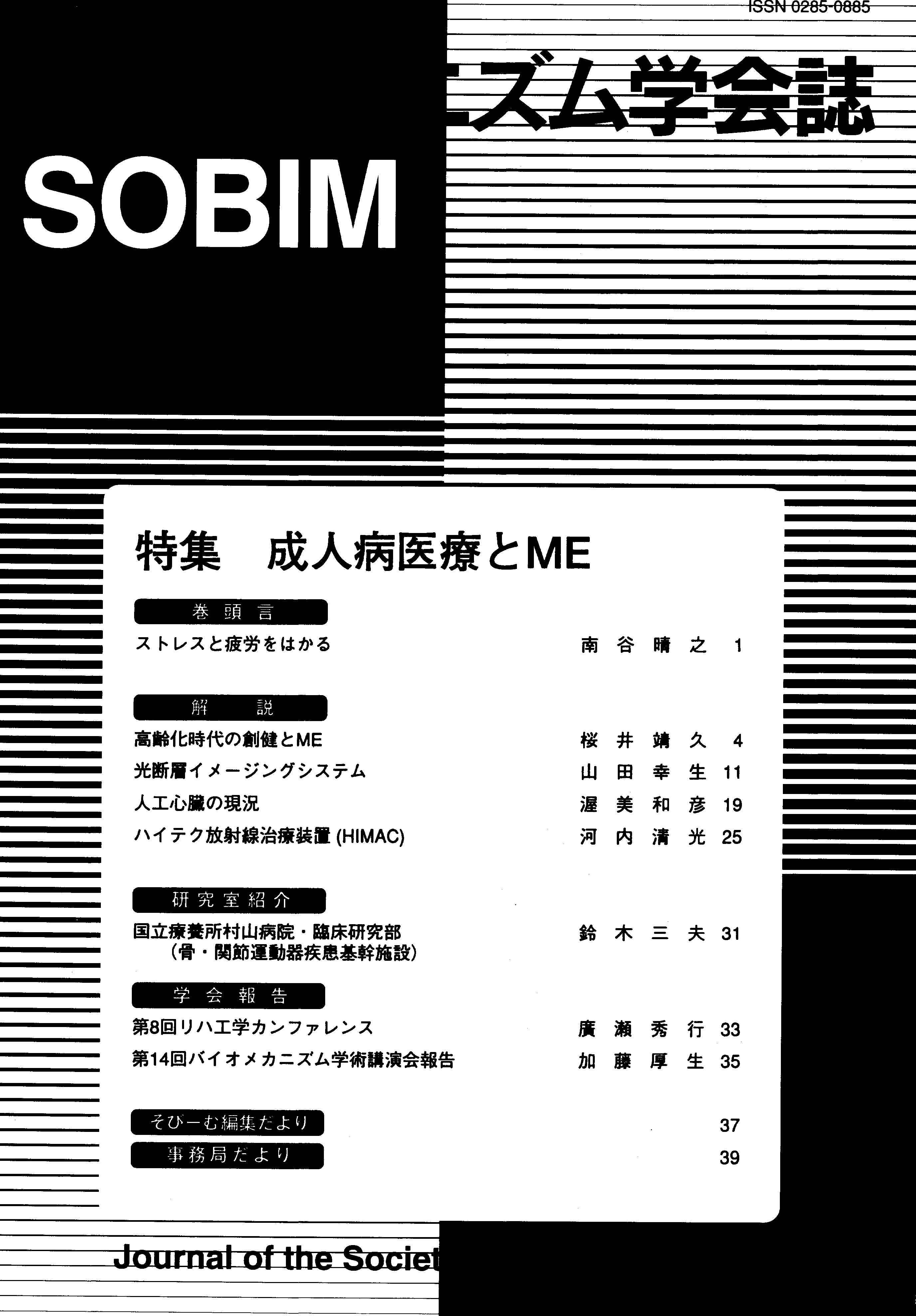巻号一覧

18 巻 (1994)
- 4 号 p. 183-
- 3 号 p. 129-
- 2 号 p. 43-
- 1 号 p. 4-
18 巻, 4 号
選択された号の論文の8件中1~8を表示しています
- |<
- <
- 1
- >
- >|
解説
-
鈴木 亨, 猪飼 哲夫原稿種別: 本文
1994 年18 巻4 号 p. 183-191
発行日: 1994/11/01
公開日: 2016/10/31
ジャーナル フリーPDF形式でダウンロード (994K) -
間嶋 満原稿種別: 本文
1994 年18 巻4 号 p. 192-197
発行日: 1994/11/01
公開日: 2016/10/31
ジャーナル フリーPDF形式でダウンロード (752K) -
大橋 正洋原稿種別: 本文
1994 年18 巻4 号 p. 198-205
発行日: 1994/11/01
公開日: 2016/10/31
ジャーナル フリーPDF形式でダウンロード (1010K) -
青山 孝原稿種別: 本文
1994 年18 巻4 号 p. 206-210
発行日: 1994/11/01
公開日: 2016/10/31
ジャーナル フリーPDF形式でダウンロード (594K) -
大谷 俊郎原稿種別: 本文
1994 年18 巻4 号 p. 211-215
発行日: 1994/11/01
公開日: 2016/10/31
ジャーナル フリーPDF形式でダウンロード (1143K)
研究
-
岡 久雄, 更谷 啓治, 龍田 光弘, 仲西 健樹, 川添 堯彬原稿種別: 本文
1994 年18 巻4 号 p. 216-221
発行日: 1994/11/01
公開日: 2016/10/31
ジャーナル フリーMeasurement of tooth mobility is important to estimate the condition of the periodontium. The authors have developed a simple and portable "T-M (Tooth Mobility) tester", by which the tooth mobility is examined. In this tester, a sinusoidal vibration is applied onto the tooth crown, an acceleration response is detected, and the MI (Mobility Index) score of tooth movement is obtained. The measuring conditions are studied: a contact preload onto the tooth, a vibrating direction of the measuring probe. The tooth mobility of artificial tooth model and the human maxillary and mandibular teeth are measured.抄録全体を表示PDF形式でダウンロード (702K) -
龍田 光弘, 仲西 健樹, 更谷 啓治, 田中 昌博, 岡 久雄, 川添 堯彬原稿種別: 本文
1994 年18 巻4 号 p. 222-228
発行日: 1994/11/01
公開日: 2016/10/31
ジャーナル フリーTooth mobility examination is important in planning dental treatment, as it may give an indication of alveolar bone loss and the condition of the periodontium. In clinic, a manual tooth mobility examination is performed. However, its determination of tooth mobility is subjective and depends on the skill and experience of the clinician. The developed T-M tester enables a dentist to measure objective tooth mobility easily and quickly. In this study, we applied this tester to upper teeth and made a comparison with an automatic diagnostic system for tooth mobility, Periotest^<[○!R]> and manual tooth mobility examination.抄録全体を表示PDF形式でダウンロード (717K) -
根武谷 吾, 野平 晴彦, 南谷 晴之, 白川 守, 内田 竜生原稿種別: 本文
1994 年18 巻4 号 p. 229-238
発行日: 1994/11/01
公開日: 2016/10/31
ジャーナル フリーThe improvement effects of active dorsiflexion of the ankle joint of the hemiplegic lower extremity through the application of weak electrical stimulation below the contraction threshold of the M.tibialis anterior (Sub-threshold Therapeutic Electrical Stimulation: STES) on the common peroneal nerve were investigated. During the delivery of STES, the active range of motion during dorsiflexion increased significantly in four of the six hemiplegic patients in whom active dorsiflexion had been observed without STES. After one month of active dorsiflexion exercise using this stimulation method, the active range of motion had clearly increased for all four hemiplegic patients in whom active dorsiflexion had not been observed without STES. Furthermore, a hemiplegic patient in whom active dorsiflexion had not been observed without STES was able to perform active dorsiflexion without STES after one year of active dorsiflexion exercise with STES. The results of this study demonstrate the feasibility of improving the active dorsiflexion motion of the ankle joint of the hemiplegic lower extremity through this stimulation method.抄録全体を表示PDF形式でダウンロード (1176K)
- |<
- <
- 1
- >
- >|